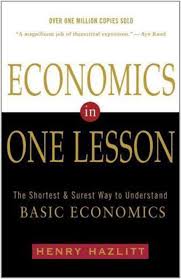Our Deepest Desires - A Review
There are a variety of ways of doing apologetics. For those that are unfamiliar with the term, apologetics is the process of offering a defense for something. In this case, I am using the term to refer to a defense of the Christian faith.
Some rely on evidential apologetics, which certainly have a place. This is the sort of approach that Francis Schaeffer and Lee Strobel are known for. Sometimes this form of apologetics comes in the form of historical analysis, like the process used by people such as Mike Licona. Sometimes it focuses on a forensic examination of biblical texts.
All of these are valid ways of explaining the validity of Christian belief.
In his recent book, Gregory Ganssle makes a case for the Christian faith in a different way, namely by explaining how the Christian helps make sense of the world, and does so better than any other faith system. His title, aptly chosen, summarizes the point of the volume: Our Deepest Desires: How the Christian Story Fulfills Human Aspirations.
At its heart, Christianity is not simply a mythology tacked on to typical human experience, it is the best explanation for everything that exists. In other words, people should be Christians because Christianity is the most satisfying account of the universe, including human nature and everything that entails.
Ganssle’s volume is brief, and is divided into four parts, with a separate introduction and epilogue. Each of the four parts consists of three chapters.
Summary
Part One deals with persons. The Christian faith entails the belief in persons who are eternally in relationship one with another. This helps to explain why we humans, who are created in the image of God, long for relationships and only flourish within relationships with other persons. It also supports our natural sense of the importance of human persons. We do amazing things for other people, especially people we love. This makes sense if the Christian depiction of the world is true.
Part Two outlines how goodness factors into our desires and how Christianity fulfills our desire for goodness. Everyone wants good things. This, of course, is something of a tautology because we often define what we want as good and good as something we want. There is, however, a great deal of commonality among humans as to what is considered good, setting aside matters of taste. And, if critics are honest, they can often discern that something is good, even if they don’t like it. Consider, for example, classical music. Someone way strongly prefer Jazz but still be able to recognize the excellence of an orchestral performance of a great work of music. Also, consider that as bad as we often feel about the world, it is amazingly good. There is too much goodness in the world for it to be an accident. Ganssle argues that the goodness we desire and often find is best explained by Christianity.
Part Two outlines how goodness factors into our desires and how Christianity fulfills our desire for goodness. Everyone wants good things. This, of course, is something of a tautology because we often define what we want as good and good as something we want. There is, however, a great deal of commonality among humans as to what is considered good, setting aside matters of taste. And, if critics are honest, they can often discern that something is good, even if they don’t like it. Consider, for example, classical music. Someone way strongly prefer Jazz but still be able to recognize the excellence of an orchestral performance of a great work of music. Also, consider that as bad as we often feel about the world, it is amazingly good. There is too much goodness in the world for it to be an accident. Ganssle argues that the goodness we desire and often find is best explained by Christianity.
The third part discusses beauty. Much like goodness, beauty is commonly sought and found more frequently than we can admit. Christian teaching holds that beauty both honors God and points us toward God. Beauty is superfluous, it is unnecessary, but it is an amazing gift from God. When we yearn for beauty or find it unexpectedly, we should see the reflection of the Christian faith.
Part Four covers the relationship between the desire for freedom to Christianity. Humans, universally, long for freedom. Even advocates of oppressive economic systems like socialism typically claim their desire to force others to live according to certain social dictates is really an attempt to free others from want and desire. Freedom is a universal desire. Often, we find that freedom in knowledge of truth. We want to know what is. We long to understand. That’s the foundation of modern science, of poetry, and of so much that we do. Humans also hope for freedom in the future. That hope is explained by Christianity. Our innate human desire for freedom is best explained and fulfilled by the radical reality of the Christian faith.
Analysis and Conclusion
Certainly, the above four paragraphs fail to do Ganssle’s volume justice. His well-crafted essays build a cogent argument and make a compelling case for believing in Christianity. He shows why it is so satisfying to be a Christian.
This volume is encouraging to those in Christ, who struggle with faith and are sometimes looking for a deeper sense—beyond the evidential proofs—of why Christianity is compelling and true.
Our Deepest Desires may also be a useful volume to put in the hands of someone who does not find the point and counter point of apologetics arguments helpful, but needs to see the grandeur of Christianity.
Ganssle’s volume deserves a place in the library of the Christian. In fact, in some locations, this volume may be best bought in quantities for distributions for those exploring the Christian faith.
The portrait Ganssle paints of Christianity is beautiful and compelling. It is a delight to read and will bear re-reading in the future.
Note: I received a gratis copy of this volume from the publisher with no expectation of a positive review.





















There’s no reason to doubt that Jesus was nailed to the cross. Ultimately, I trust what Scripture says about Jesus’s crucifixion because I also trust what it says about his resurrection. And that’s what we should be celebrating this week.